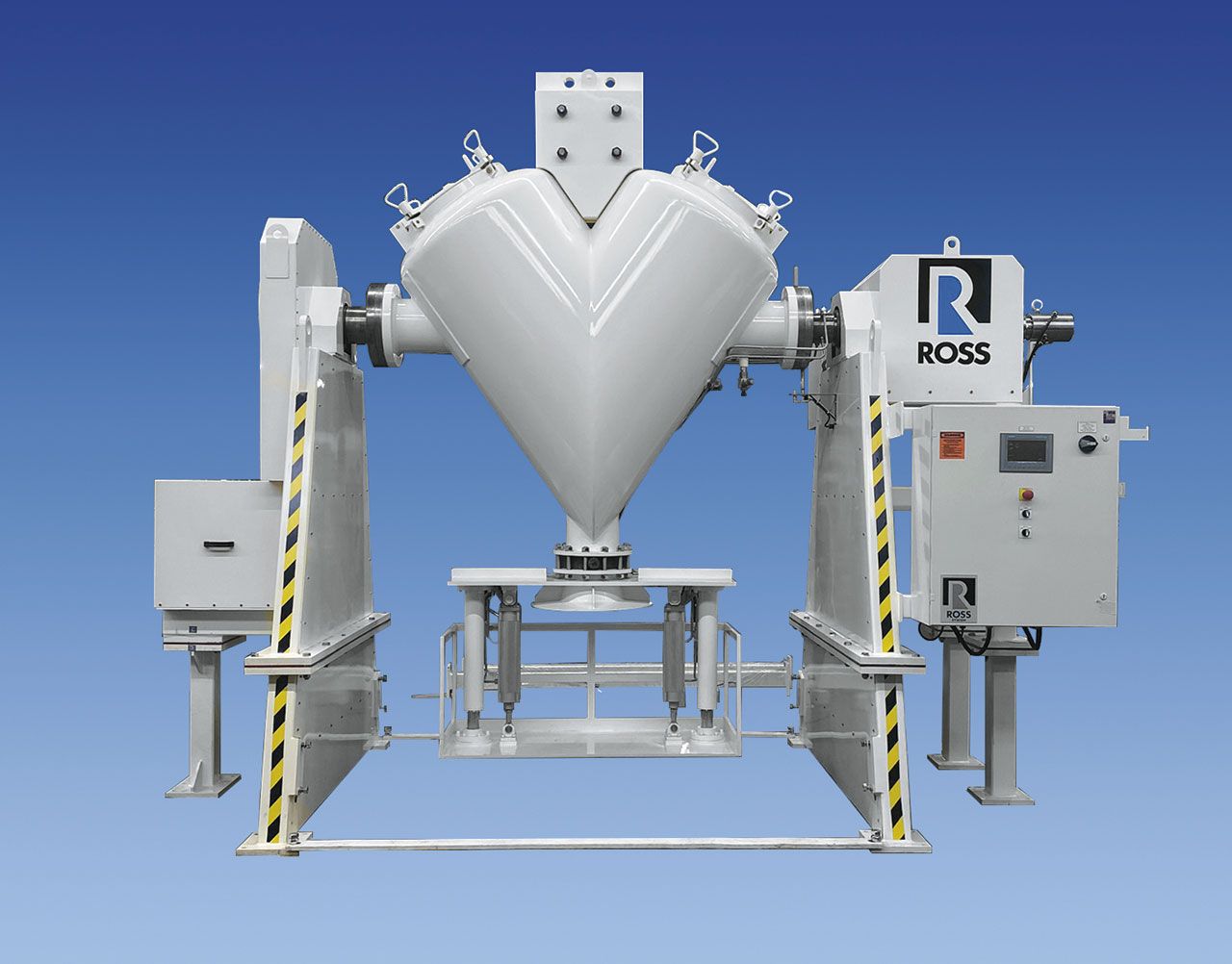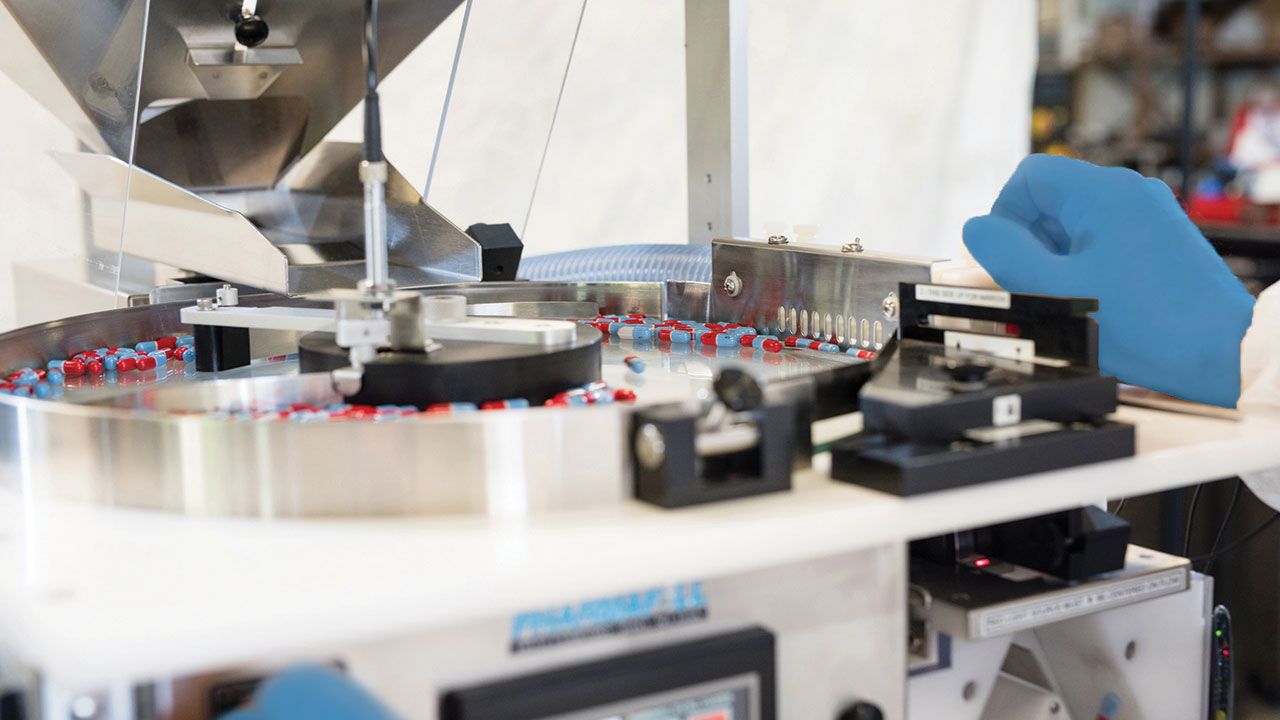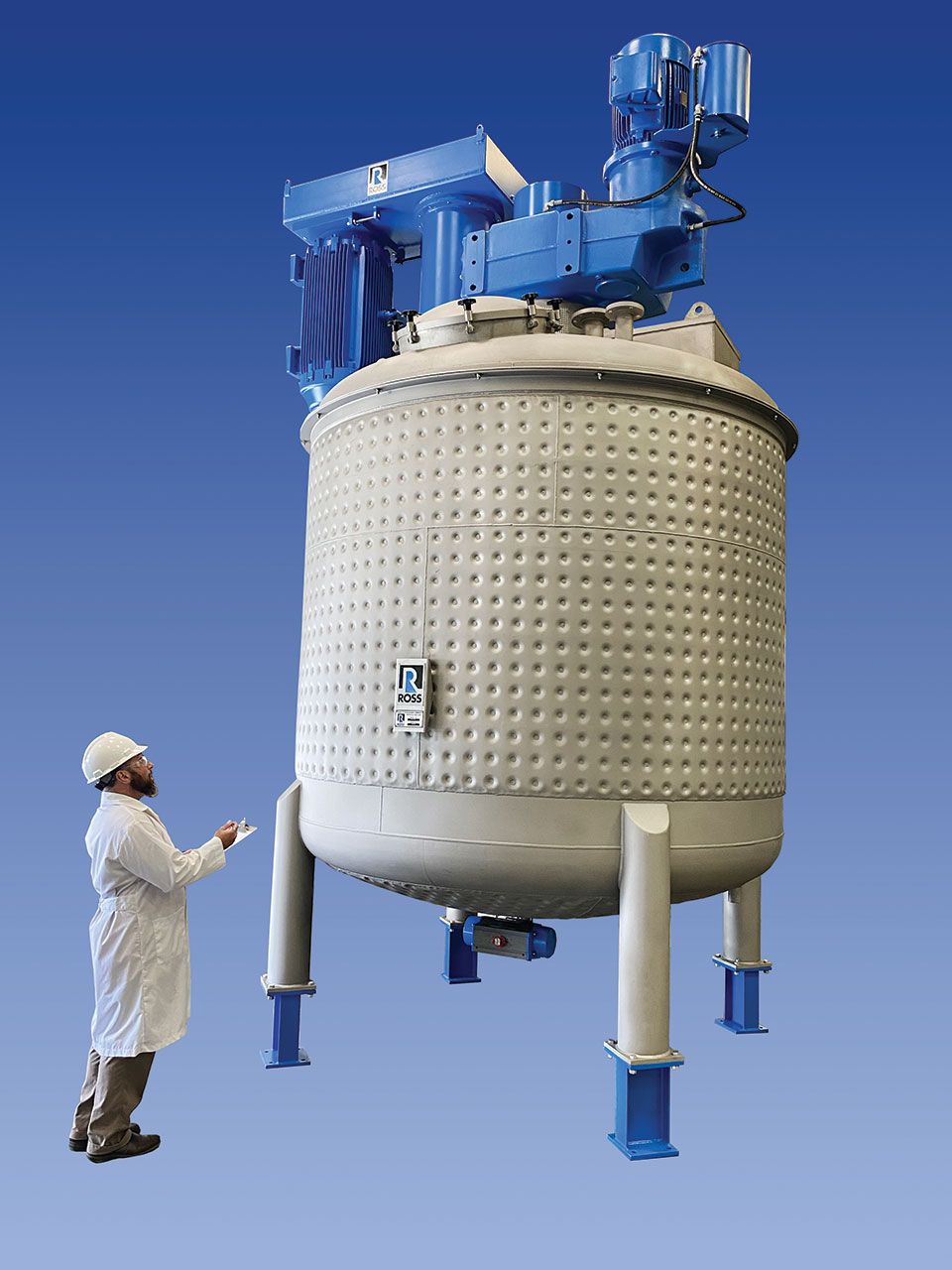Feature
Article
V-Shaped Cone Tumble Blender
Author(s):
Charles Ross & Son's ROSS V Cone Blenders utilize diffusion as the main mechanism for mixing.
ROSS Model VCB-20 | Image Credit: ©Charles Ross & Son Company

ROSS V Cone Blenders utilize diffusion as the main mechanism for mixing. As the V-shaped vessel rotates on its horizontal axis, batch materials cascade down, distributing particles over a freshly exposed surface. Operating at speeds of 5 to 25 revolutions per minute, the ROSS line of tumble blenders can mix dry solid blends (including high density powders), low-viscosity slurries, friable materials, and formulations containing trace components and ingredients that are dissimilar in size, shape, and density.
The pictured ROSS Model VCB-20 includes two pneumatic cylinders affixed to the V cone body to disconnect and connect fiber drums for charging and discharging. The blender’s butterfly valve is operated by optional pneumatic control. A high-speed intensifier bar is installed along the mixer’s axis of rotation to reduce agglomerates, and nozzles can be attached to it for continuous liquid additions during mixing. The model also includes carbon steel legs with 40” clearance beneath the discharge valve to the floor, and safety guardrails at the front and rear of the mixer.
Newsletter
Get the essential updates shaping the future of pharma manufacturing and compliance—subscribe today to Pharmaceutical Technology and never miss a breakthrough.


